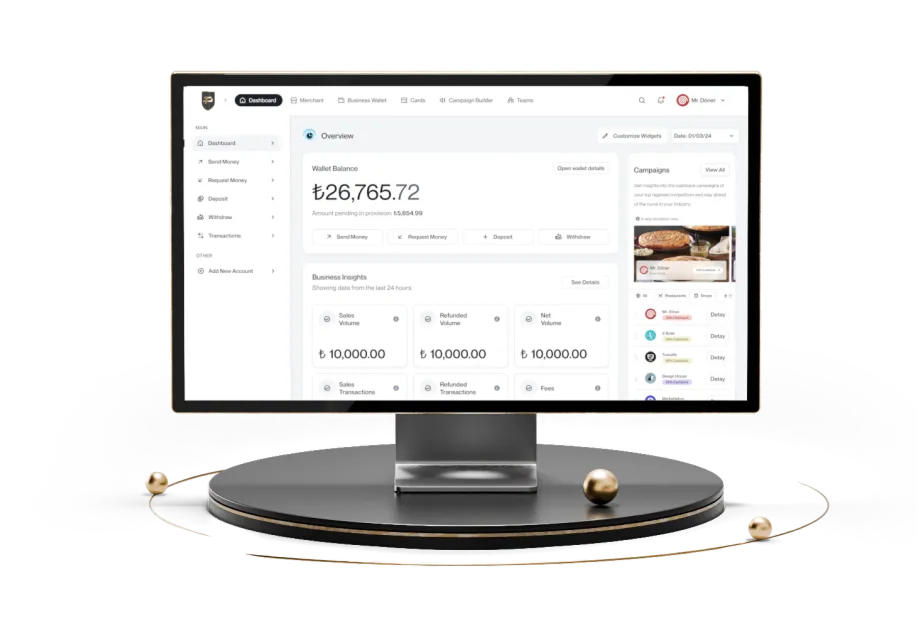At every stage of life, reaching financial goals requires a solid roadmap. One of the most effective tools in this journey is a well-prepared monthly budget plan. By managing your income and expenses, you can not only save money but also build investment habits and look to the future with more confidence. Whether you’re just getting started or aiming to strengthen your current budget, following the proper steps makes it possible to build a solid financial foundation. So, how is a practical budget plan created, and what should you pay attention to? Papel Blog explains it all for you!
The fundamentals of monthly budget planning
To achieve your financial goals, monthly budgeting can be a great help. In addition to balancing your income and expenses, a monthly budget plan will also help you develop saving and investment habits. Here are the key elements to consider when creating your budget plan:
Establishing the balance between income and expenses
The first step in planning your budget is to define your income and expenses clearly. You can classify your income as either fixed (such as salary or rental income) or variable (such as side jobs or bonuses). Similarly, you can categorize your expenses into fixed (such as rent and bills) and variable (like shopping and entertainment). Making this distinction will make it easier to manage your spending.
Creating spending categories
Categorizing your expenses will help you use your budget more efficiently. For example, separating your costs into categories such as rent, transportation, food, entertainment, and investment will allow you to see how much you’re spending in each area and make adjustments if necessary.
Make a budget plan
After identifying and analyzing your income and expenses, you can establish spending limits for each category to maintain control. For instance, setting a monthly limit for entertainment expenses and sticking to it can help you save money.
Track your spending
By regularly reviewing your expenses, you can effectively manage your budget. You can use digital apps or create an Excel spreadsheet to track and analyze your spending habits.
Set realistic goals
To stay motivated, consider setting both short-term and long-term goals and include monthly savings targets in your budget. For example, you can create an emergency fund for the short term or save for big purchases, such as a house or car, in the long term. You might be asking yourself, “How can I save when I earn so little?” The answer can also be found on the Papel Blog. Check out our article "
How to Invest with a Small Budget?" to find the answers you’re looking for.
How to prepare a budget plan?
To achieve your financial goals and maintain discipline, preparing a monthly budget is highly effective. To do this, you need to identify the method that works best for you. Determining your wants, needs, and savings based on your income and expenses is critical to avoiding difficulties and maintaining consistency. Here are a couple of budgeting rules you can follow:
• 50/30/20 rule: Allocate 50% of your income to needs, 30% to wants, and 20% to savings and investments.
• 70/10/20 rule: Allocate 70% of your income to needs, 10% to wants, and 20% to savings and investments.
How to track your spending?
You can track your expenses using digital applications or by creating a spreadsheet in Excel. By using Microsoft’s free budget templates, you can categorize your spending and check whether you’re meeting your savings goals. To track your income and expenses in Excel, follow these steps:
1. Create separate columns for income and expenses.
2. Record each expense and income with the date, description, and amount.
3. Calculate total income and expenses to determine your monthly net savings.
4. Use charts and formulas to analyze your spending habits.
Common budgeting mistakes
To achieve your financial goals, it's essential to create a budget and adhere to it with discipline. To develop saving and investment habits, you must learn to manage your income and expenses. Of course, you may make some mistakes while learning, but we’re here to warn you. The most common budgeting mistakes are:
• Spending more than you earn: Spending beyond your means leads to debt and financial stress.
• Excessive borrowing: Uncontrolled use of credit cards and loans increases your interest burden.
• Unnecessary purchases: Impulse and non-essential spending can block your savings goals.
• Neglecting to track your budget: Failing to review your income and expenses regularly makes it difficult to stay financially in control.
This blog post contains general information, not legal, financial, or investment advice. The content is prepared for informational purposes only, and you are advised to seek professional advice for your specific circumstances. The expressions in this article do not carry any binding nature or responsibility and reflect only the author’s evaluation. All your decisions are your responsibility, and Papel Electronic Money and Payment Services Inc. accepts no liability for any consequences arising from them.



